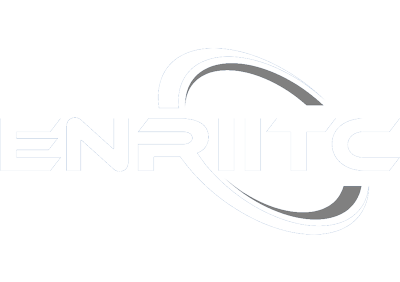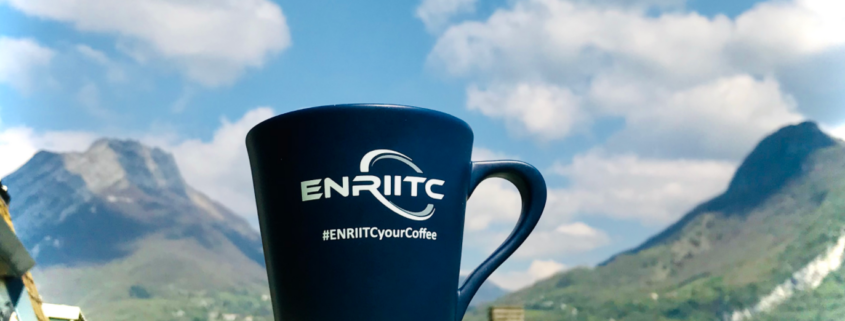#ENRIITCyourCoffee Season 3: Episode 2 – “Everyday life for a Big Science Supplier”
This episode of #ENRIITCyourCoffee took us as close to the industry conveyer belt, as our virtual coffee breaks allow. Frida Tibblin-Citron, Business Developer at Big Science Sweden introduced us to Leif Gjerlöv Jensen, Technical Sales Engineer at AB Carlsson & Möller and we were able to pick his brain on what is it like to be a player at the Big Science table.
The session started with a presentation from Frida on Big Science Sweden, which is a Swedish Industrial Liaison Officer organisation. Big Science Sweden is a consortium, consisting of different universities and institutes in Sweden and they also hold a weekly meeting – The Business Corner. The Business Corner is a meeting place and procurement opportunity sharing place for network suppliers. It seems that short weekly get-togethers are the key to success in the ILO-ICO cooperation.
Leif presented AB Carlsson & Möller next. In a nutshell, he characterised the company as follows:
“If you Google something and can’t find it, then we will make it.”
AB Carlsson & Möller was founded in 1948, which Leif refers as “not a very old company but not a new one either”. They focus on engineering plastics and components with the temperature range of + 250 to -180 Celsius; low and high friction; radiation resistant materials, magnetic materials, electric and thermal isolation and conductive materials and various composite plastic with fillers like steel, ceramic, boron, bronze and many more. Check out AB Carlsson & Möller website here and get in contact with Leif via lg@c-m.se.
Leif emphasised how important it is to keep up with the Big Science scene. Carlsson & Möller’s jump to Big Science started in 2017 at the IPAC exhibition in Copenhagen where they made connections all over the world. Carlsson & Möller decided to focus on Europe, while there was interest from all corners of the world. “We’re a small company of 75 people, and we are production company – we’re not buying from other countries, we produce all our products ourselves.” Although, cooperation and being international is still ingrained in Carlsson & Möller activities. Their Swedish customers also have partners in various countries, so Carlsson & Möller helps facilitate those relationships as well.
Leif believes in added value for the customer and production innovation.
“Sometimes the price for the delivery, measurement report and documentation is higher than the product’s because it is so important that the size is correct and the surfaces are correct.”
Although, it’s not easy to be a supplier for Big Science facilities such as one of their regular customers the European Organization for Nuclear Research (CERN). A supplier must have a stable yet flexible production. A supplier must understand and deliver what the customer needs.
After Leif’s presentation, Frida was eager to ask her questions on what makes Carlsson & Möller the success story of small to medium sized enterprises (SMEs) for Big Science. Here Leif could not stress enough: being visible and showing ones capabilities. He urges to be open minded towards innovation and overall towards international relationships: “You must be innovative because business is not coming to you while you’re sitting back in the office. You have to do something special. Part of the success is to show you want to do this.” This sentiment also echoed in the reply to the next question from Claudia Alen Amaro (Senior Project Manager at Instruct-ERIC). Claudia asked how they reach such Research Infrastructures (RIs) that are not as centralised as CERN, but rather like her home institution Instruct-ERIC, which is spread out across Europe. Leif assured us that being visible is the key.
Jorge Lopez from CDTI in Spain dove right in the core of the work process with such big facilities like CERN: does the customer tell you exactly the size/shape/material their bit needs be or does the customer tell you how they want to use the bit and does Carlsson & Möller then figure out the exact details? Leif lifted the veil of the complex work they do and confirmed that they get the broad wish from the customer and then do the calculations and measurements themselves. This is partly why they need such large engineering power.
As usual for our coffee discussions, the topic reverted to the hard questions: costs. Alan Silverman, United Kingdom ILO representative at CERN asked how to deal with the overhead costs. Leif’s answer to this and other questions about 3D printing, reverse engineering can be viewed from the video below.
Frida and Leif’s presentation can be viewed here.
We welcome you back next week and until then stay safe and innovate!






Leave a Reply
Want to join the discussion?Feel free to contribute!